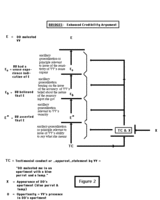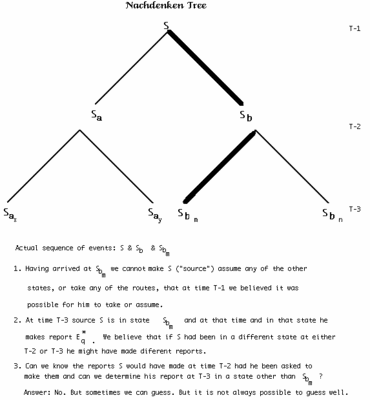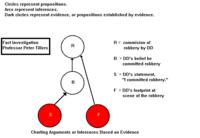
The meaning of legal rules -- such as rules of evidence -- depends only in part, but in essential part on how such rules work. To wit: You do not know the meaning of a legal rule of evidence unless and until you know how the rule works and the consequences that the rule (in its environment) produces. Given this, law professors should be devoting massive amounts of energy to study of scholarship in artificial intelligence a/k/a computational intelligence.
I reiterate this preachy conclusion only because a recent UAI list call for papers [CFP] caught my eye and because this CFP, like many other UAI CFPs, reminded me of how little we law teachers (and, very probably, law and economics scholars) know about the meaning and workings of legal rules. [UAI is the acronym for "Uncertainty in Artificial Intelligence."] Take a gander at these extracts from a CFP for a forthcoming (May 8 & 9, 2006) program of CLIMA VII, Seventh International Workshop on Computational Logic in Multi-Agent Systems, at Future University, Hakodate, Japan, http://www.fun.ac.jp/aamas2006/:
Multi-Agent Systems are communities of problem-solving entities that can perceive and act upon their environment to achieve their individual goals as well as joint goals. ...
Computational logic provides a well-defined, general, and rigorous
framework for studying syntax, semantics and procedures for various
tasks by individual agents, as well as interaction amongst agents in
multi-agent systems ....
The process of litigation and proof involves "multiple agents", such agents (lawyers, clients, judges, other actors) are "problem-solving entities", such agents "can perceive and act upon their environment", they can act to "achieve ... individual as well as joint goals."
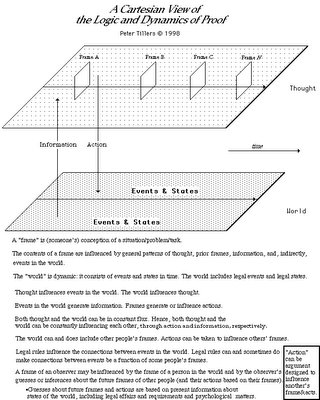
Consider for a moment some of kinds of methods that are used to try to decipher multi-agent systems:
* logical foundations of (multi-)agent systems
* extensions of logic programming for (multi-)agent systems
* modal logic approaches to (multi-)agent systems
* logic-based programming languages for (multi-)agent systems
* non-monotonic reasoning in (multi-)agent systems
* decision theory for (multi-)agent systems
* agent and multi-agent hypothetical reasoning and learning
* theory and practice of argumentation for agent reasoning and
interaction
* knowledge and belief representation and updates in (multi-)agent
systems
* operational semantics and execution agent models
* model checking algorithms, tools, and applications for (multi-) agent logics
* semantics of interaction and agent communication languages
* distributed constraint satisfaction in multi-agent systems
* temporal reasoning for (multi-)agent systems
* distributed theorem proving for multi-agent systems
* logic-based implementations of (multi-)agent systems
* specification and verification of formal properties of (multi-) agent systems
Does the above list of topics suggest that legal scholars have something to learn from their brothers and sisters in computational intelligence and allied fields?
Interdisciplinary work is hard. Interdisciplinary work is humbling. And interdisciplinary work demands humility. I often think that law teachers would do more and better interdisciplinary work if they (law teachers) were not so determined to show how smart they are. There are many intelligent people on earth, and many of them are in disciplines other than law, and some of those people know things law teachers don't. I have found that confessing ignorance while approaching smart people in other disciplines is a fruitful strategy. Your colleagues in foreign disciplines will be flattered by your interest and they will often take the time to explain things to you. Oh yes, remember this: you know some things they don't know, and you're not as stupid as you may sometimes feel you are.
BTW, some law & economics literature seems determined to talk about decision but not about inference. Isn't this is a fundamental mistake? If some of the actors or agents in the environment that one wishes to understand and explain have inferential mechanisms or processes in their souls, isn't it clear that the behavior of such agents ordinarily cannot be predicted well if little or no account is taken of the agents' inferential processes? (And please note, you law & economics folk: those inferential mechanism and processes are extraordinarily complicated, and simplifying such processes "for the sake of argument" is often unjustified.)
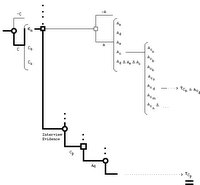 One of the controversies about the 2000 US Presidential election was over spoiled ballots -- for example, about ballots on which scratches were made but no holes were punched and about ballots that were punched two or three times instead of the one time that the voting instructions mandated. I remember there was much talk about inferring the intentions of the voters in such instances. I also remember that I ventured the opinion (an opinion which achieved no resonance) that in many instances voters probably deliberately diddled and daddled and acted in strange and non-purposive ways -- that, for example, they mutilated ballots just because they felt like mutilating ballots and had no other reason or discernible reason for doing so. Do you think that in fact a substantial number of voters might have acted in such seemingly odd -- or, in any case, inexplicable -- ways when they entered the voting booth? If so, perhaps you will agree with me that there may be at least an allusive connection between it is bit and the drawing of inferences about human behavior. Perhaps one of the hypotheses that ought to be in play when we attempt to infer what a human being did (is doing or will do) is that the possibility that the human behavior in question (whatever it was) was unmotivated by any discernible purpose or principle and was not explicable by reference to any rule of any sort. So perhaps it is possible that human behavior, like events at the quantum level, is to some extent fundamentally inexplicable and unpredictable. Professor Anton Zellinger of Vienna recently said (Dennis Overbye, Quantum Trickery: Testing Einstein's Strangest Theory, NY Times Online (Dec. 27, 2005):
One of the controversies about the 2000 US Presidential election was over spoiled ballots -- for example, about ballots on which scratches were made but no holes were punched and about ballots that were punched two or three times instead of the one time that the voting instructions mandated. I remember there was much talk about inferring the intentions of the voters in such instances. I also remember that I ventured the opinion (an opinion which achieved no resonance) that in many instances voters probably deliberately diddled and daddled and acted in strange and non-purposive ways -- that, for example, they mutilated ballots just because they felt like mutilating ballots and had no other reason or discernible reason for doing so. Do you think that in fact a substantial number of voters might have acted in such seemingly odd -- or, in any case, inexplicable -- ways when they entered the voting booth? If so, perhaps you will agree with me that there may be at least an allusive connection between it is bit and the drawing of inferences about human behavior. Perhaps one of the hypotheses that ought to be in play when we attempt to infer what a human being did (is doing or will do) is that the possibility that the human behavior in question (whatever it was) was unmotivated by any discernible purpose or principle and was not explicable by reference to any rule of any sort. So perhaps it is possible that human behavior, like events at the quantum level, is to some extent fundamentally inexplicable and unpredictable. Professor Anton Zellinger of Vienna recently said (Dennis Overbye, Quantum Trickery: Testing Einstein's Strangest Theory, NY Times Online (Dec. 27, 2005):
















